Full text
PDF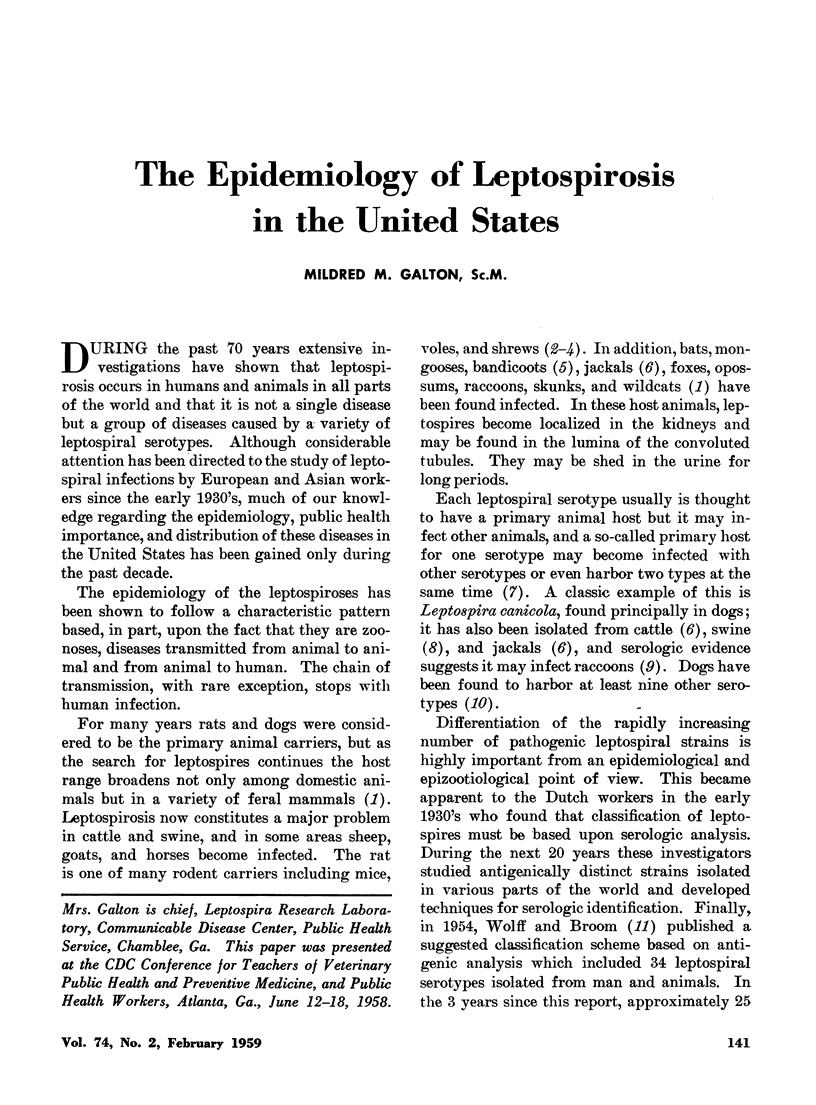

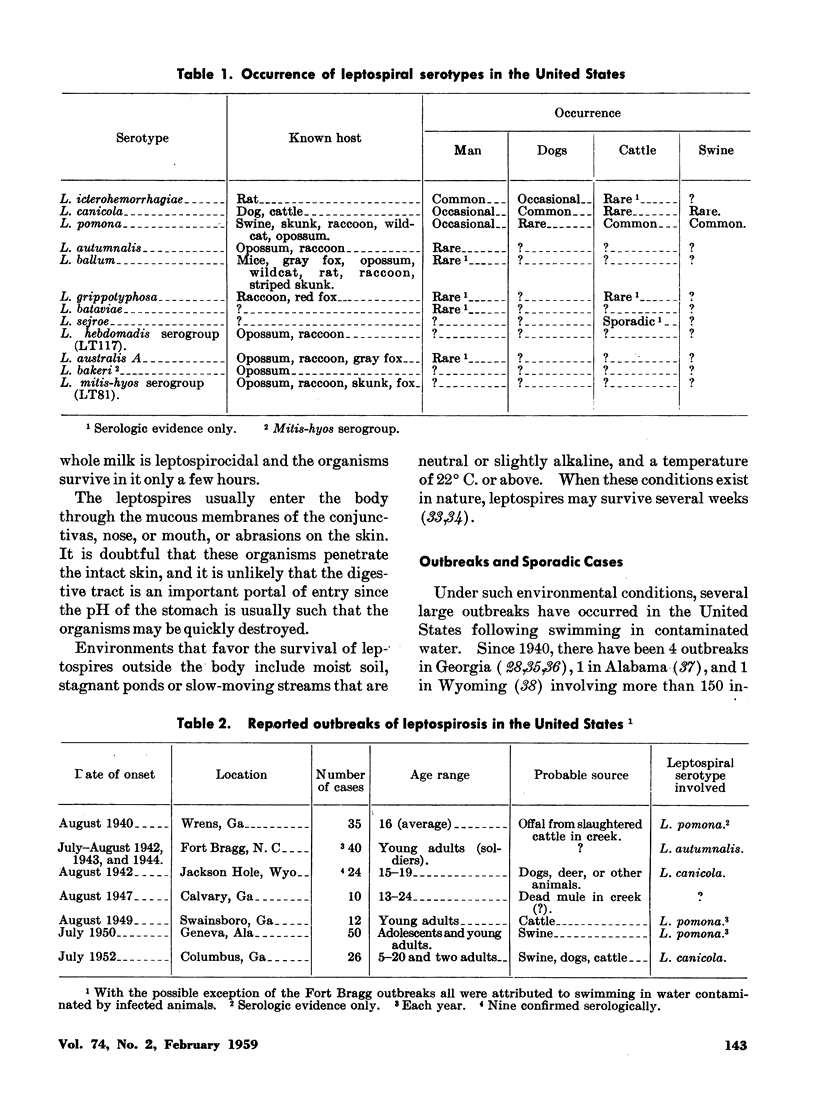
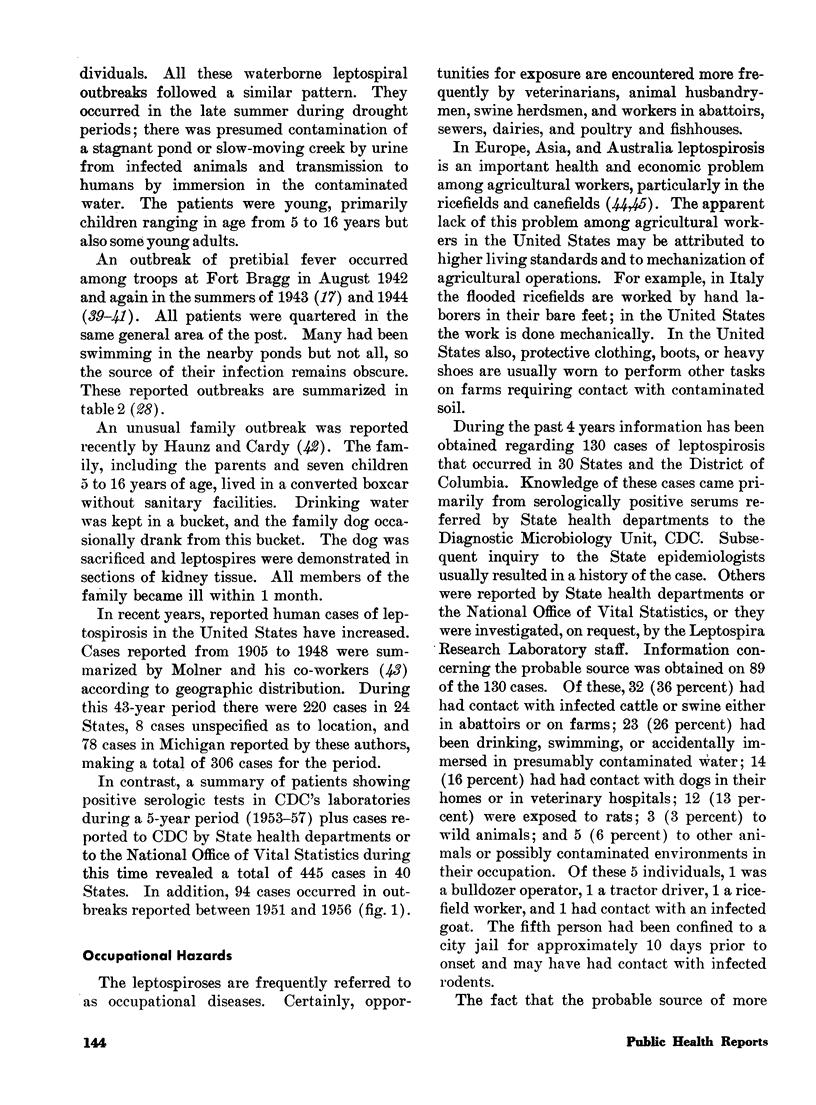
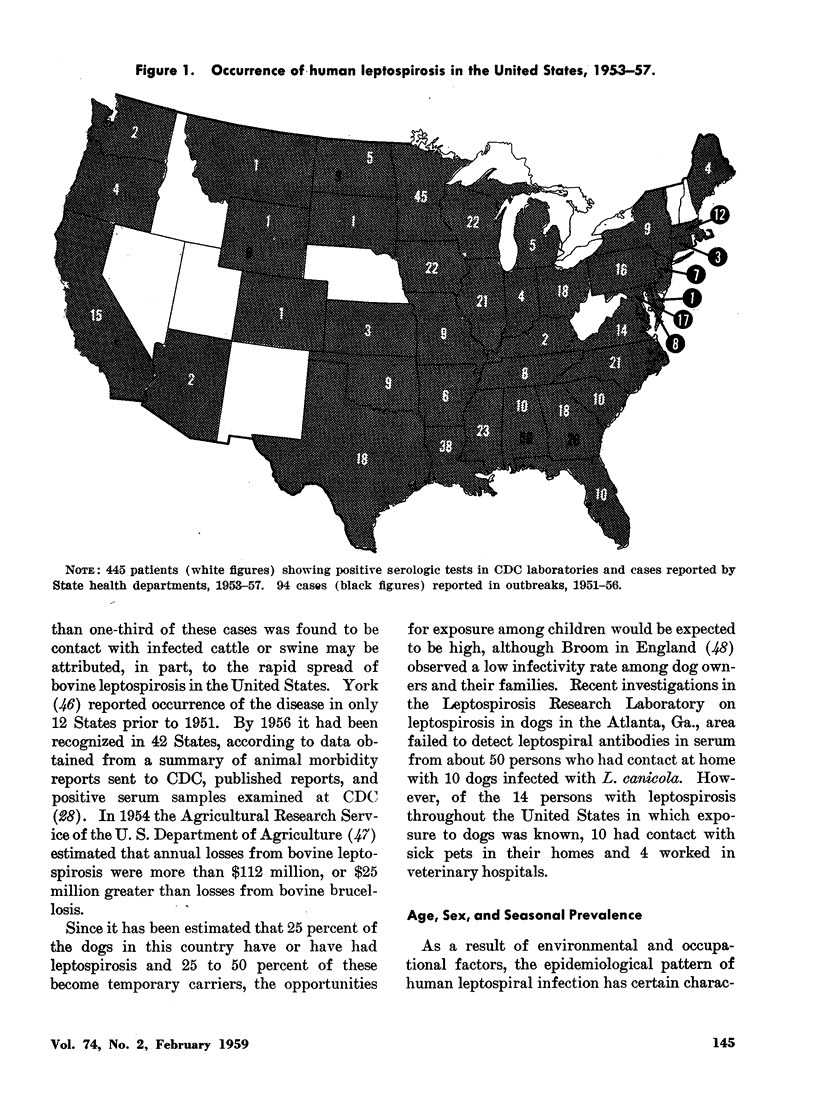
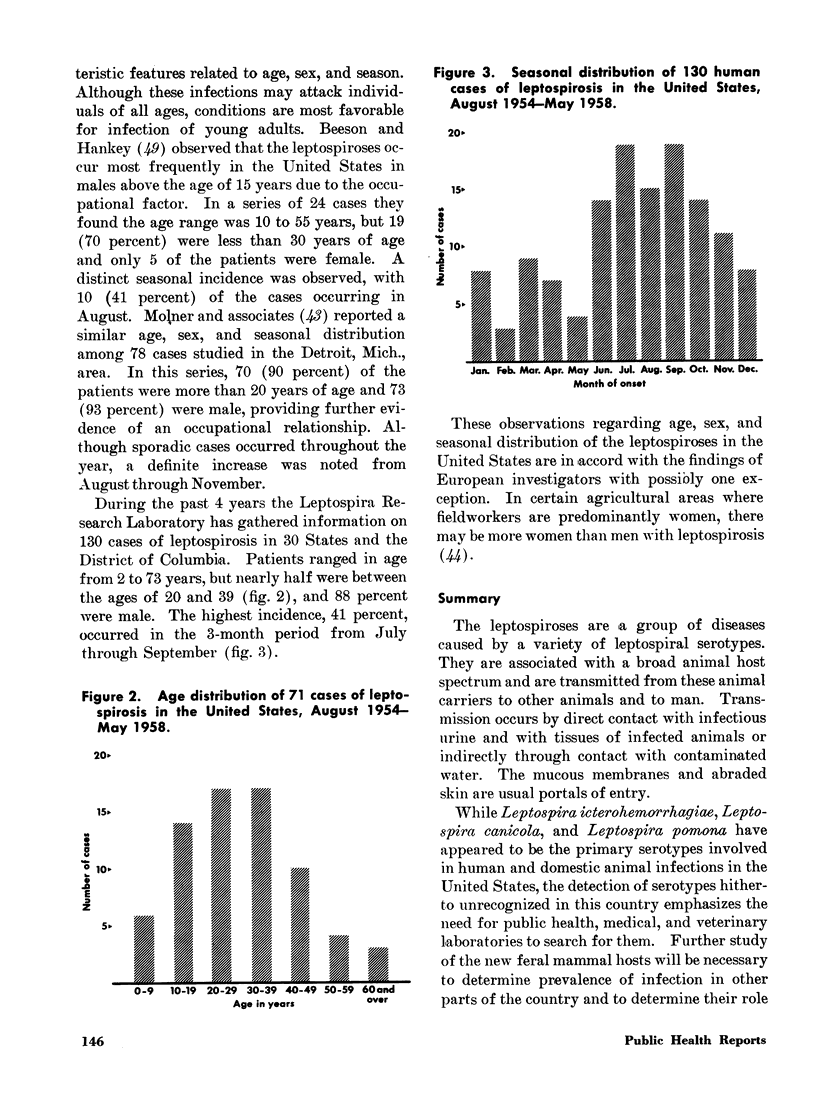
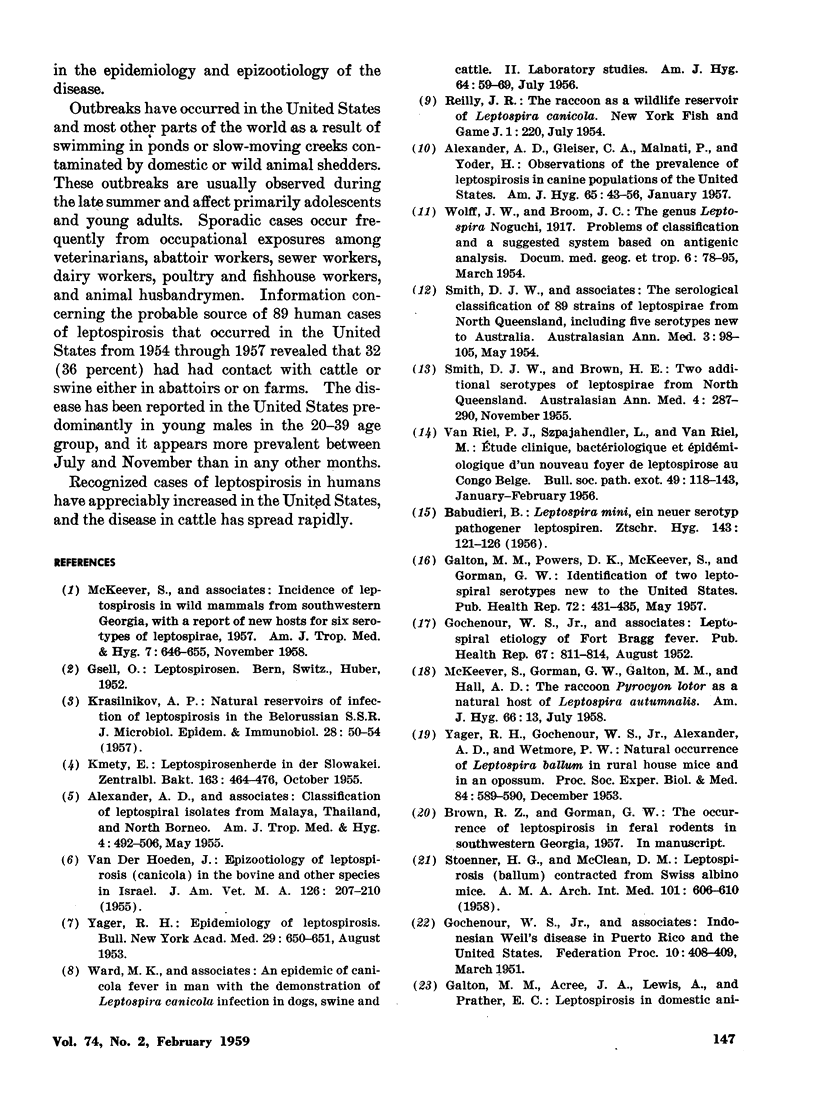
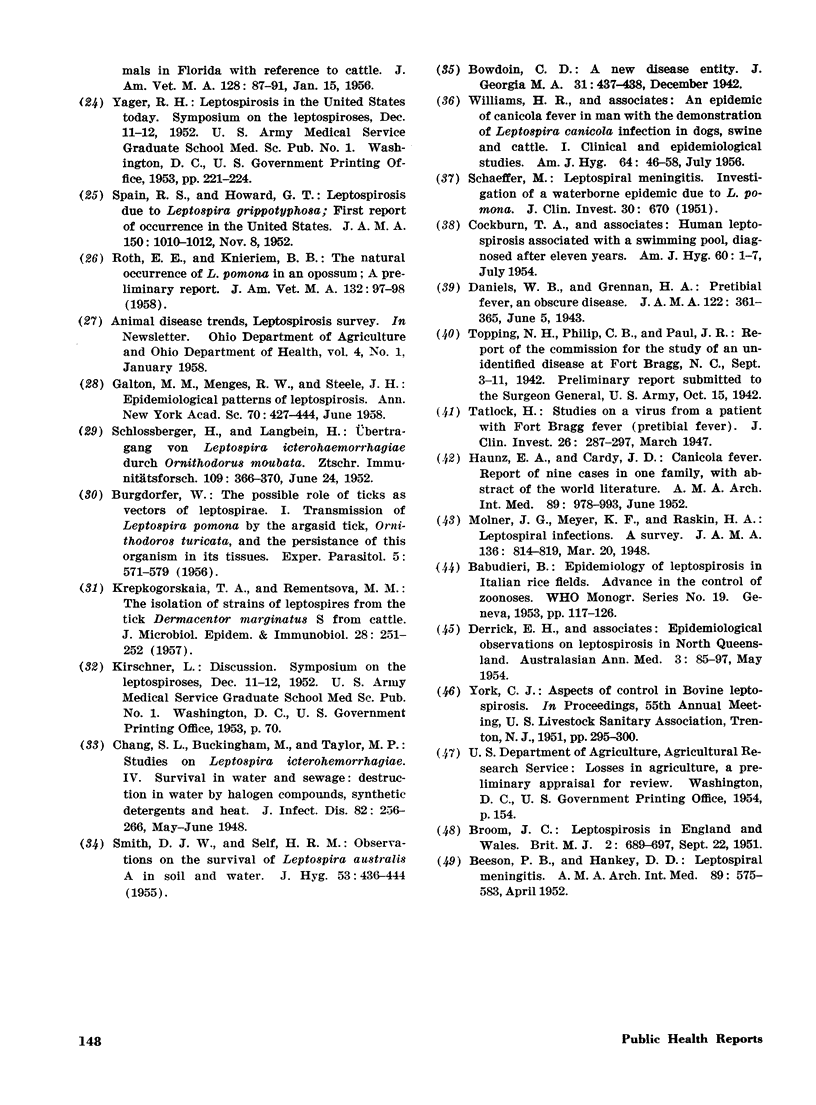
Selected References
These references are in PubMed. This may not be the complete list of references from this article.
- ALEXANDER A. D., GLEISER C. A., MALNATI P., YODER H. Observations on the prevalence of leptospirosis in canine populations of the United States. Am J Hyg. 1957 Jan;65(1):43–56. doi: 10.1093/oxfordjournals.aje.a119855. [DOI] [PubMed] [Google Scholar]
- ALEXANDER A. D., WETMORE P. W., EVANS L. B., JEFFRIES H., GLEISER C. A. Classification of leptospiral isolates from Malaya, Thailand and North Borneo. Am J Trop Med Hyg. 1955 May;4(3):492–506. doi: 10.4269/ajtmh.1955.4.492. [DOI] [PubMed] [Google Scholar]
- BABUDIERI B. Leptospira Mini, ein neuer Serotyp pathogener Leptospiren. Z Hyg Infektionskr. 1956;143(2):121–126. [PubMed] [Google Scholar]
- BEESON P. B., HANKEY D. D. Leptospiral meningitis. AMA Arch Intern Med. 1952 Apr;89(4):575–583. doi: 10.1001/archinte.1952.00240040054007. [DOI] [PubMed] [Google Scholar]
- BROOM J. C. Leptospirosis in England and Wales. Br Med J. 1951 Sep 22;2(4733):689–697. doi: 10.1136/bmj.2.4733.689. [DOI] [PMC free article] [PubMed] [Google Scholar]
- BURGDORFER W. The possible role of ticks as vectors of leptospirae. I. Transmission of Leptospira pomona by the argasid tick, Ornithodoros turicata, and the persistance of this organism in its tissues. Exp Parasitol. 1956 Nov;5(6):571–579. doi: 10.1016/0014-4894(56)90030-3. [DOI] [PubMed] [Google Scholar]
- DERRICK E. H., GORDON D., ROSS C. J., DOHERTY R. L., SINNAMON C. N., MACDONALD V. M., KENNEDY J. M. Epidemiological observations on leptospirosis in North Queensland. Australas Ann Med. 1954 May;3(2):85–97. doi: 10.1111/imj.1954.3.2.85. [DOI] [PubMed] [Google Scholar]
- GALTON M. M., MENGES R. W., STEELE J. H. Epidemiological patterns of leptospirosis. Ann N Y Acad Sci. 1958 Jun 3;70(3):427–444. doi: 10.1111/j.1749-6632.1958.tb35401.x. [DOI] [PubMed] [Google Scholar]
- GALTON M. M., POWERS D. K., MCKEEVER S., GORMAN G. W. Identification of two leptospiral serotypes new to the United States. Public Health Rep. 1957 May;72(5):431–435. [PMC free article] [PubMed] [Google Scholar]
- GOCHENOUR W. S., Jr, SMADEL J. E., JACKSON E. B., EVANS L. B., YAGER R. H. Leptospiral etiology of Fort Bragg fever. Public Health Rep. 1952 Aug;67(8):811–813. [PMC free article] [PubMed] [Google Scholar]
- HAUNZ E. A., CARDY J. D. Canicola fever report of nine cases in one family, with abstract of the world literature. AMA Arch Intern Med. 1952 Jun;89(6):978–993. doi: 10.1001/archinte.1952.00240060121015. [DOI] [PubMed] [Google Scholar]
- KMETY E. Leptospirosenherde in der Slowakei. Zentralbl Bakteriol Orig. 1955 Oct;163(7-8):464–476. [PubMed] [Google Scholar]
- McKEEVER S., GORMAN G. W., CHAPMAN J. F., GALTON M. M., POWERS D. K. Incidence of leptospirosis in wild mammals from Southwestern Georgia, with a report of new hosts for six serotypes of leptospires. Am J Trop Med Hyg. 1958 Nov;7(6):646–655. doi: 10.4269/ajtmh.1958.7.646. [DOI] [PubMed] [Google Scholar]
- McKEEVER S., GORMAN G. W., GALTON M. M., HALL A. D. The raccoon, Procyon lotor, a natural host of Leptospira autumnalis. Am J Hyg. 1958 Jul;68(1):13–14. doi: 10.1093/oxfordjournals.aje.a119945. [DOI] [PubMed] [Google Scholar]
- ROTH E. E., KNIERIEM B. B. The natural occurrence of Leptospira pomona in an opossum; a preliminary report. J Am Vet Med Assoc. 1958 Feb 1;132(3):97–98. [PubMed] [Google Scholar]
- SMITH D. J., BROWN H. E. Two additional serotypes of leptospirae from North Queensland. Australas Ann Med. 1955 Nov;4(4):287–290. doi: 10.1111/imj.1955.4.4.287. [DOI] [PubMed] [Google Scholar]
- SMITH D. J., SELF H. R. Observations on the survival of Leptospira australis A in soil and water. J Hyg (Lond) 1955 Dec;53(4):436–444. doi: 10.1017/s0022172400000942. [DOI] [PMC free article] [PubMed] [Google Scholar]
- SPAIN R. S., HOWARD G. T. Leptospirosis due to Leptospira grippotyphosa; first report of occurrence in United States. J Am Med Assoc. 1952 Nov 8;150(10):1010–1012. doi: 10.1001/jama.1952.63680100009014e. [DOI] [PubMed] [Google Scholar]
- STOENNER H. G., MACLEAN D. Leptospirosis (ballum) contracted from Swiss albino mice. AMA Arch Intern Med. 1958 Mar;101(3):606–610. doi: 10.1001/archinte.1958.00260150094011. [DOI] [PubMed] [Google Scholar]
- Tatlock H. STUDIES ON A VIRUS FROM A PATIENT WITH FORT BRAGG FEVER (PRETIBIAL FEVER). J Clin Invest. 1947 Mar;26(2):287–297. doi: 10.1172/JCI101807. [DOI] [PMC free article] [PubMed] [Google Scholar]
- VAN DER HOEDEN J. Epizootiology of leptospirosis (Canicola) in the bovine and other species in Israel. J Am Vet Med Assoc. 1955 Mar;126(936):207–210. [PubMed] [Google Scholar]
- WARD M. K., MCDANIEL M. B., TATUM H. W., STARR L. E., WILLIAMS H. R. An epidemic of canicola fever in man with the demonstration of Leptospira canicola infection in dogs, swine and cattle. II. Laboratory studies. Am J Hyg. 1956 Jul;64(1):59–69. doi: 10.1093/oxfordjournals.aje.a119824. [DOI] [PubMed] [Google Scholar]
- WILLIAMS H. R., MURPHY W. J., MCCROAN J. E., STARR L. E., WARD M. K. An epidemic of canicola fever in man with the demonstration of Leptospira canicola infection in dogs, swine and cattle. I. Clinical and epidemiological studies. Am J Hyg. 1956 Jul;64(1):46–58. doi: 10.1093/oxfordjournals.aje.a119823. [DOI] [PubMed] [Google Scholar]
- WOLFF J. W., BROOM J. C. The genus Leptospira Noguchi, 1917; problems of classification and a suggested system based on antigenic analysis. Doc Med Geogr Trop. 1954 Mar;6(1):78–95. [PubMed] [Google Scholar]
- YAGER R. H. Epidemiology of the leptospiroses. Bull N Y Acad Med. 1953 Aug;29(8):650–651. [PMC free article] [PubMed] [Google Scholar]
- YAGER R. H., GOCHENOUR W. S., Jr, ALEXANDER A. D., WETMORE P. W. Natural occurrence of Leptospira ballum in rural house mice and in an opossum. Proc Soc Exp Biol Med. 1953 Dec;84(3):589–590. doi: 10.3181/00379727-84-20721. [DOI] [PubMed] [Google Scholar]


